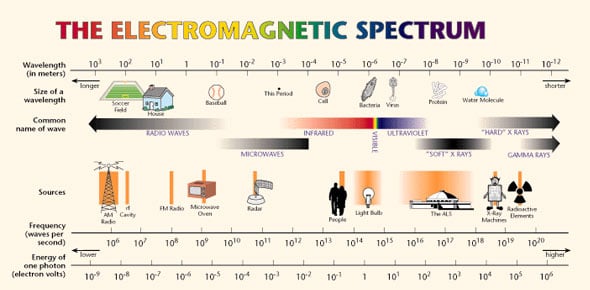Em Spectrum - X-rays

Explore the discovery, properties, and applications of X-rays. Learn about their generation, medical uses, and how they interact with different materials.
- 1.
X-Rays were first observed and documented by?
- A.
Wilhelm Conrad Roentgen
- B.
Tom Conrad Roentgen
- C.
Wilfred Conrad Roentgen
Correct Answer
A. Wilhelm Conrad RoentgenExplanation
Wilhelm Conrad Roentgen is credited with being the first person to observe and document X-rays. He made this discovery in 1895 while experimenting with cathode rays. Roentgen's groundbreaking work led to the development of X-ray technology, which has since revolutionized medical imaging and diagnostics. His discovery earned him the first Nobel Prize in Physics in 1901.Rate this question:
-
- 2.
X-Rays can be generated from atoms and free electrons.
- A.
True
- B.
False
Correct Answer
A. TrueExplanation
X-rays can be generated from atoms and free electrons. This is true because X-rays are produced when high-energy electrons collide with atoms, causing the electrons in the atoms to be excited and then release energy in the form of X-rays. Additionally, X-rays can also be generated through the process of Bremsstrahlung, where fast-moving electrons are decelerated by a target material, resulting in the emission of X-rays. Therefore, both atoms and free electrons can contribute to the generation of X-rays.Rate this question:
-
- 3.
Why silhouettes of bones and teeth are left on the X-ray film?
- A.
They are less dense and absorb less x-rays
- B.
They are more dense and absorb more x-rays
Correct Answer
B. They are more dense and absorb more x-raysExplanation
The silhouettes of bones and teeth are left on the X-ray film because they are more dense and absorb more x-rays. X-rays are a form of electromagnetic radiation that can pass through soft tissues, such as muscles and organs, but are absorbed by denser materials like bones and teeth. This differential absorption creates the contrast on the X-ray film, allowing the visualization of these structures.Rate this question:
-
- 4.
X-rays can only be used on humans.
- A.
True
- B.
False
Correct Answer
B. FalseExplanation
X-rays can be used on both humans and animals. They are a form of electromagnetic radiation that can penetrate the body to create images of bones, organs, and tissues. X-rays are commonly used in medical settings to diagnose and monitor various conditions in both humans and animals. Therefore, the statement that X-rays can only be used on humans is false.Rate this question:
-
- 5.
X-rays have a longer wavelength than visible light
- A.
True
- B.
False
Correct Answer
B. FalseExplanation
X-rays have a shorter wavelength than visible light. X-rays are a form of electromagnetic radiation with very high energy and short wavelengths, while visible light has longer wavelengths. This is why X-rays can pass through certain objects and are used in medical imaging, while visible light is used for everyday vision.Rate this question:
-
Quiz Review Timeline +
Our quizzes are rigorously reviewed, monitored and continuously updated by our expert board to maintain accuracy, relevance, and timeliness.
-
Current Version
-
Mar 21, 2022Quiz Edited by
ProProfs Editorial Team -
Sep 15, 2009Quiz Created by
L-ionel


